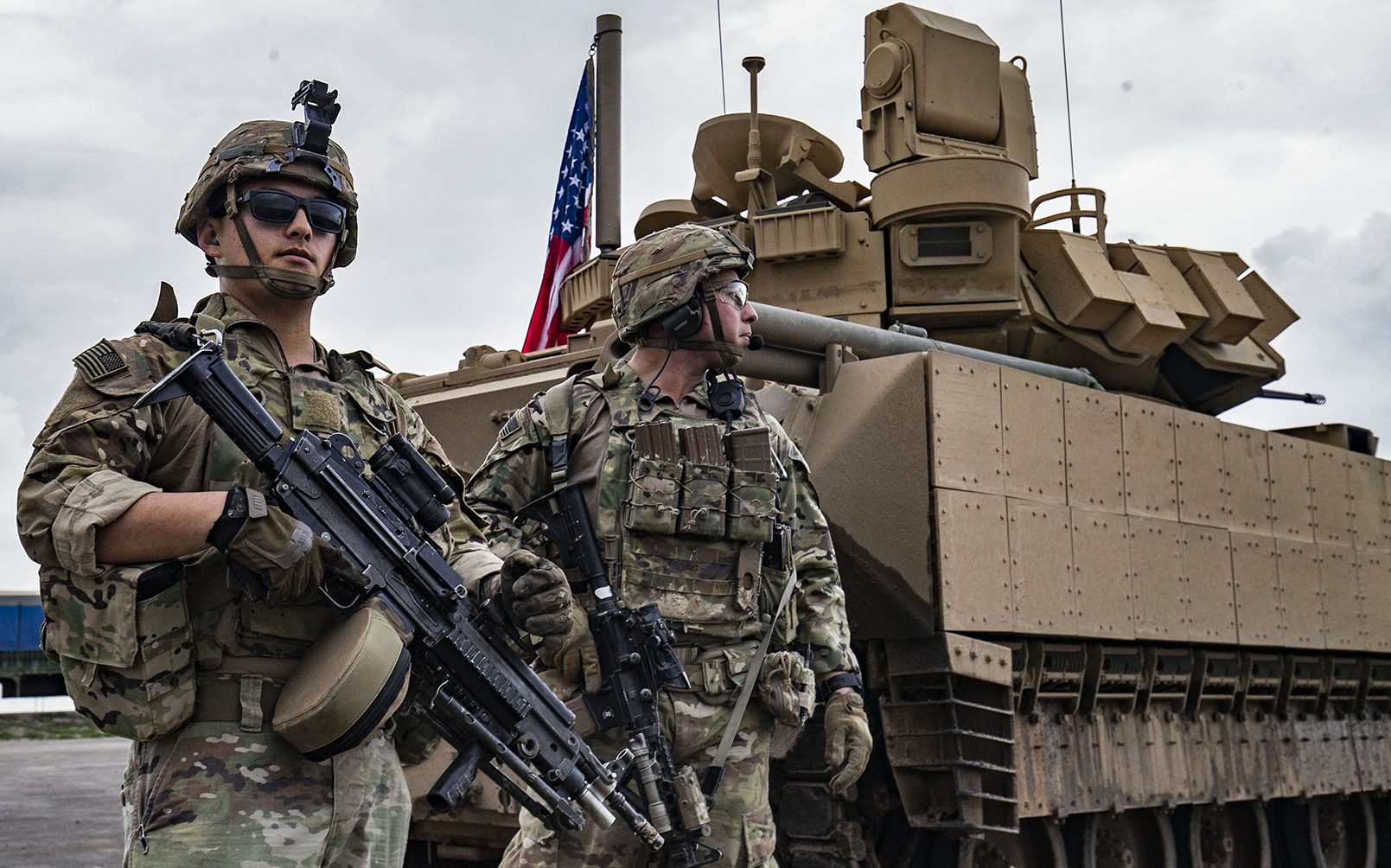

The U.S. military continues to wage a campaign against the Islamic State group in Iraq and Syria while dealing with a surging wave of violence from Iranian-backed militia groups.
In November, U.S. troops and partner forces launched 40 missions against ISIS, according to U.S Central Command, or CENTCOM. Twenty-four of those missions took place in Iraq, resulting in three suspected ISIS fighters being killed and another 14 detained.
U.S. troops conducted an additional 16 missions against ISIS in Syria, leading to one suspected ISIS fighter being killed and 19 captured.
Roughly 2,500 U.S. troops are in Iraq and another 900 are deployed to Syria to prevent ISIS from reestablishing its caliphate, But since war erupted between Hamas and Israel on Oct. 7, Iranian proxies have repeatedly attacked American forces in the region with rockets, drones, and at least one ballistic missile.
That means the U.S. military has essentially been fighting two enemies at the same time in Syria and Iraq. Since Oct. 17, American forces in both countries have been attacked 78 times by groups affiliated with Iran.
Subscribe to Task & Purpose Today. Get the latest military news and culture in your inbox daily.
The U.S. military has also carried out at least three airstrikes in Syria targeting sites used by Iran’s Islamic Revolutionary Guard Corps and another three strikes in Iraq. Most recently, U.S. forces killed five suspected militants who were believed to be preparing to launch a one-way attack drone on Dec. 3 near Kirkuk.

Iran took advantage of the United States’ initial focus on destroying ISIS to build a network of militias in the region, said Behnam Ben Taleblu, an Iran expert at the Foundation for the Defense of Democracies think tank in Washington, D.C.
The surge in attacks against American troops in Iraq and Syria by Iranian-backed groups is part of an Iranian strategy to force the United States to prevent Israel from destroying Hamas, Taleblu told Task & Purpose.
“Iran’s ultimate goal in Iraq remains the eviction of US forces and a government in Baghdad that remains pliant to the Islamic Republic’s interest,” Taleblu said. “It will continue to use all tools at its disposal to puncture Iraqi politics, society, economy, and even religious institutions to achieve this.”
The U.S. military’s mission to defeat ISIS began in August 2014. By that point, the terrorist organization had captured about a third of Syria and 40% of Iraq. Much of the Iraqi military, which the United States had spent years training and equipping, had simply evaporated.
“Even in the midst of complex challenges within the region, CENTCOM remains steadfast to the region and the enduring defeat of ISIS,” Army Gen. Michael “Erik” Kurilla, head of CENTCOM, said in a statement on Thursday.
Despite ongoing attacks by Iranian-backed groups, the pace of operations against ISIS in Iraq and Syria countries during November remained roughly consistent with previous months. U.S. troops launched a total of 79 missions in both countries during September and October and 36 missions in August.
So far this year, the U.S. military has conducted 427 missions against ISIS in Iraq and Syria, up from 313 missions in 2022.

Even though the U.S. military has carried out more missions against ISIS in 2023 than last year, those operations have resulted in far fewer suspected ISIS operatives being killed. In 2022, U.S. troops and their partner forces in Iraq and Syria killed 686 suspected ISIS fighters, compared with the 105 that have been killed in both countries as of this November.
The uptick in attacks by Iranian-backed groups does not seem to have affected the U.S. military’s mission to defeat ISIS in any significant way, said retired Army Gen. Joseph Votel, who led CENTCOM from 2016 to 2019.
While these attacks have become more frequent in recent weeks, this is a threat that the U.S. military has dealt with for some time, Votel told Task & Purpose. American forces in Iraq and Syria have adequate measures in place to protect its forces in both countries, and U.S. commanders have a good understanding of the situation on the ground that allows them to manage the risks.
“Long-term – I think a more successful attack that caused significant American casualties/damage could slow down our operations,” Votel said. “Likewise – the continued attacks in Iraq could have an impact on our relationship with the Iraqi military and political leadership – particularly as we continue to take unilateral action to protect ourselves. ISIS does benefit if US support is diminished or curtailed.”
ISIS morphed into an insurgency after its last enclave was captured in 2019 by Syrian Democratic Forces, or SDF, a mostly Kurdish group that has served as America’s primary ally on the ground in Syria.
U.S. troops remain deployed to Iraq and Syria at the request of the Iraqi prime minister and SDF leaders to prevent the remnants of ISIS from being able to carry out significant attacks or reconstitute itself and pose a threat to Iraq, Syria, the Middle East, and Europe, said retired Army Gen. David Petraeus, who led U.S. troops in Iraq during the surge and later commanded all U.S. and NATO forces in Afghanistan.
“Given that mission, the attacks by Iranian-supported Shia militia on our bases and forces requires force protection measures and other actions that divert our attention and assets somewhat from the focus on ISIS,” Petraeus told Task & Purpose. “That said, I don’t believe the militia threat will prevent our forces and those with which we partner from continuing to keep substantial pressure on ISIS elements.”
The latest on Task & Purpose
- Marine Infantry veteran says enlisted shouldn’t become officers — mayhem ensues
- Father loses 80 pounds, joins Air Force alongside his 2 sons
- Opinion: Veterans won’t help the recruiting crisis until our issues are addressed
- Navy fires head of Amphibious Squadron 5 for ‘loss of confidence’
- How much do CIA case officers get paid? A look at life as a spook